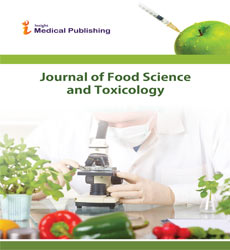MEASURING ELEMENTAL SULFUR IN LATE MANUALLY TREATED GRAPE JUICE IN RELATION TO POLYFUNCTIONAL MERCAPTAN FORMATION IN SAUVIGNON BLANC WINES.
Abstract
Aim
Sauvignon blanc displays a range of styles, including prominent tropical and passionfruit aromas. High concentrations of the associated ‘polyfunctional mercaptans’, 3-mercaptohexanol (3MH) and 3-mercaptohexyl acetate (3MHA), have been found in Sauvignon blanc wines from Marlborough, New Zealand.1 The polyfunctional mercaptans are formed from non-volatile precursors in the juice, with one mechanism involving an interaction between a sulfur donor and unsaturated C6-compounds.2 Machineharvesting is the most common harvesting practice used in New Zealand, with a higher probability of adding some leaves to the must, which can contain elemental sulfur (S0) commonly sprayed in the field to protect berries against powdery mildew.3 S0 is known to cause unwanted reductive aromas, including H2S, in particular wines, unless remediation steps are undertaken during winemaking. Also, it was shown that extra S0 additions to crushed grapes could lead to greater polyfunctional mercaptan formation in various white wines.4 Despite the clear effects of residual S0 present in the must on the final wine quality and aroma5, its
measurement is not regularly undertaken in wineries due to the lack of easy and applicable methods
Methods
We have optimized a sulfide sensor for S0 measurement in grape juice samples and investigated the correlation between S0 concentration in grape juice and polyfunctional mercaptans concentration in final wines. A simple apparatus was designed to reduce S0 to sulfide using dithiothreitol (under acidic conditions, as H2S), followed by an ion-selective electrode (ISE) to measure sulfide concentrations (under alkaline conditions as S2-). GC-MS was used to analyze thiol concentrations in wine samples to allow comparisons with juice S0 concentrations. During harvest 2022, we explored a wider range of residual S0 levels, through later manual S0 applications in the vineyard. Additional S0 applications were made 20, 10 and 5 days prior to harvesting the treated grapes, covering long and short pre-harvest intervals (PHI). The grapes were processed into juice and fermented into wine; then, they were analyzed to find the correlation between polyfunctional mercaptans concentrations in the wines and residual S0 in the juice samples
Results/Findings
The semi-log calibration curve plotted based on the ISE data showed excellent linearity. The results also showed that the reduction process was successful, and the apparatus works well with both standard and juice samples. The second significant finding was that higher 3MH/3MHA was formed with greater juice elemental sulfur and supported the proposed pathway in which S0 is a source of 3MH formation in wines
Conclusions
The methodology allows the relationship between the concentration of S0 residues and the concentration of polyfunctional mercaptans in the final wines to be investigated. The analysis is applicable in a winery setting to evaluate the potential of grape juices to form polyfunctional mercaptans and/or reductive compounds in wines.
Open Access Journals
- Aquaculture & Veterinary Science
- Chemistry & Chemical Sciences
- Clinical Sciences
- Engineering
- General Science
- Genetics & Molecular Biology
- Health Care & Nursing
- Immunology & Microbiology
- Materials Science
- Mathematics & Physics
- Medical Sciences
- Neurology & Psychiatry
- Oncology & Cancer Science
- Pharmaceutical Sciences
